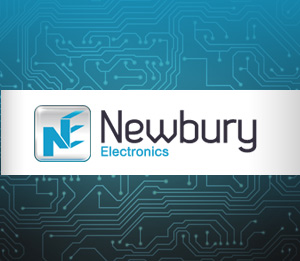
Introducing the BBC micro:bit: what is it, how does it work and what can you do with it?
Getting students into coding
The BBC is doing its ‘bit’ for computing and electronics in the form of the micro:bit! Described as a ‘pocked-sized codable computer’, the micro:bit is being handed out for free to year seven students across the UK – there’s one for each of them in fact. They want to get young people more interested and involved with coding, something that we’re very keen to support here at Newbury Electronics.
The BBC’s contribution to student electronics dates back to the 1980s when they introduced many children to computing via the BBC Micro. The micro:bit is like the Micro’s smarter little brother. It is more advanced, more compact, and ultimately easier to use – 17 times lighter and 18 times faster! 29 revered partners have contributed to the project, assuring that the technology is as suitable as possible for its purpose.
What is the micro:bit?
It is a tiny codable computer, sized at just 4cm by 5cm. Similar to the Raspberry Pi, it is designed to be both easy to use and versatile. In accordance with the general direction of modern electronics, the micro:bit is designed to be a mobile and wearable device. Key features include LED lights, programmable buttons, monitor detectors, Bluetooth, a built-in compass and input/output rings. That’s a lot of components packed into 4x5 cm! It has been designed to specifically work with modern technology; students will be able to connect them to their mobile phones, tablets, laptops and other devices. There’s not much more to it than that. This is because the specific functions of a micro:bit will be determined by the designers themselves.
How does it work?
The micro:bit will be accompanied by easy-to-use web software that will allow students to get a gentle introduction to the world of programming. This software will be accessible from any PC, smart phone, or tablet. It will be compatible with two major coding languages: Microsoft TouchDevelop (text-based) and Microsoft Blocks (graphic coding). The designer will be able to save and trial-run their designs using an on-site simulator, letting them test out their ideas before they put them into practice. The basic components of the micro:bit can then be manipulated into creating whatever the programmer likes.
What can you make using the micro:bit?
The software is both simple to use and capable of supporting advanced electronic projects. That’s the beauty of the micro:bit. Most students will begin with the most basic programming, often writing their names in the micro:bit’s LED lights. This can be done in a matter of minutes and no prior coding knowledge is needed. Beyond this, the possibilities of the micro:bit lie with the creative minds using them. Samsung have shown how the micro:bit can be used to program a 'selfie' camera app, using just three lines of code. Any student with a tablet containing Android 4.4 and up will be able to do this. Innovations so far also include an ‘air guitar’, where programmers attach the micro:bit to a cardboard guitar shape and code it to respond to simulated strumming. The micro:bit also has the capability to support simple coded video games such as the likes of Flappy Bird. However it also offers the option of allowing coders to expand and add to these games. These are all projects that can greatly appeal to young electronics students, and should definitely do the job of getting them exciting about computing... The future of coding looks bright.

